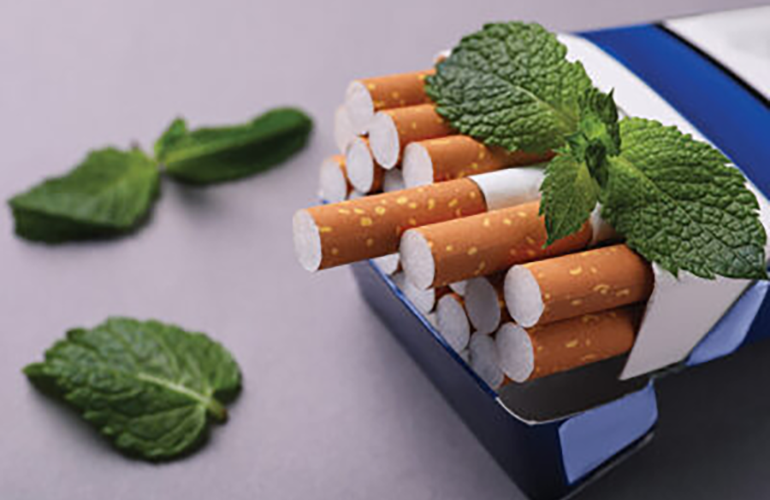
Each time c-store management thinks they have a timetable for the ban on menthol cigarettes and flavored cigars, the Food & Drug Administration (FDA) or the White House resets the play clock. So far, the FDA has moved its “effective date” for its bans from May 2023 to October 2023, to “end of the year,” and now to March 2024.
But it’s not the effective date that impacts costs and commerce. It’s the enforcement date for banned SKUs to be off the shelves. Meanwhile, retailers and tobacco companies are trying to make plans and earn money at the same time.
Budgets and timely production, discontinuation of product lines and replacement stock keeping units (SKUs) still have a foggy date to sync with.
On June 22, 2009, President Obama signed the Tobacco Control Act with its ban on cigarette flavors. Flavor offenders had 90 days to remove inventory at retail and in warehouses. Tax-stamped products were returned on cue. Companies knew exactly when to ship replacement SKUs. Returns involved around 1% of the cigarette market.
What’s My Shipping Schedule?
This time the transition is much bigger and more complex. Flavors including menthol make up 34% of tobacco cigarette sales and fully half of cigar and cigarillo sales. A sizable number of replacement SKUs will be nicotine-free menthol or flavored smoking products.
Non-tobacco, nicotine-free segments of the tobacco category will feature a wide range of new products over which the FDA will, ironically, have no regulatory authority under the Tobacco Control Act. Botanicals and hemp-based brands are already on the shelf in California and test markets in the Midwest. Costco is testing Djarum Bliss clove smokes. New 20-pack STEP nicotine-free smokes in regular and menthol are in trial markets including California and Texas.
Nicotine-free hemp-based smokes like Versa filters and tipped cigars are on the shelf in independent c-stores and smoke shops, complete with self-invented warning labels. Retail chains will be next as soon as the FDA decides on the language for proposed hemp rules. The FDA is still to make any promised policy statements or enforce any existing regulation against smokable hemp products under the Food, Drug and Cosmetics Act, but will “work with Congress on a new way forward” in 2024.
For the FDA it’s all about nicotine as a compromise solution to reducing tobacco use. But the flavored smoking market will deliver ingredients other than tobacco, and nicotine won’t be included. The key flavors that made up half the cigar section will be available again with familiar filters in standard packaging.
Research response from menthol smokers shows that their priorities are governed less by nicotine than the FDA believes. Menthol smokers are loyal to the cooling taste and relaxation they enjoy beyond tobacco content. What will be the appeal of a tobacco-free menthol smoke to a dedicated menthol smoker? What are the alternatives as smokers become more conscious of tobacco health risks?
Consumers Will Always Try New Ideas
Obviously, the future of the tobacco category won’t rest on an increase in nicotine-free smoking products, no matter how great they taste. But how many menthol smokers will go for a botanical or hemp menthol smoke when their tobacco brand is gone? Nothing will be certain until the menthol ban is enforced in a measurable way.
Without the menthol ban, the net decrease in cigarette consumption in 2024 is projected at 2.6%, a decrease of 400,000 packs according to the U.S. Centers for Disease Control (CDC). With the ban, the overall decrease including menthol quitters may be around 5% after switching and failed quitting.
One early indicator of a nicotine-free menthol trend is Djarum Bliss Emerald (menthol), which has jumped to the No. 2 choice among clove smokers in both California and Canada without hemp or CBD. What is the comparative response of human physiology between CBD and nicotine? Can CBD be a neuro-physical replacement for nicotine? The FDA doesn’t know.
Various industry sources project increases in premium imported cigars of up to 17% as a c-store segment, an easy category decision to offer better cigars at value pricing. Smokeless snuff and snus already have a range of products with tobacco and non-tobacco with nicotine.
According to Nielsen, alternate nicotine products are currently 3% of category by volume. An increase of 25% will fill some empty slots if the FDA can catch up with market authorizations. Even in the best light, nicotine alternatives might be 5% of tobacco section sales. Wraps and other cannabis accessories still evoke caution among c-store chain management. Vape? Not much growth as FDA fights a defensive battle to slow underage use and health issues begin to surface, so we’ll see.
An Afterthought
New product intrusions in 2024, along with the FDA’s sliding schedule, will make things more intriguing and more confusing at the same time. The number of the nicotine-free choices to make it onto the post-ban shelf set will depend mostly on how c-stores and smoke shops view menthol. $22 billion is at stake. After an initial trial surge, tobacco-free may capture 12% of that. Hemp has to clear its legal limbo and CBD still exists primarily as a feel-good cure-all. And … oh yeah, lawsuits. It’s going to be an interesting year.




